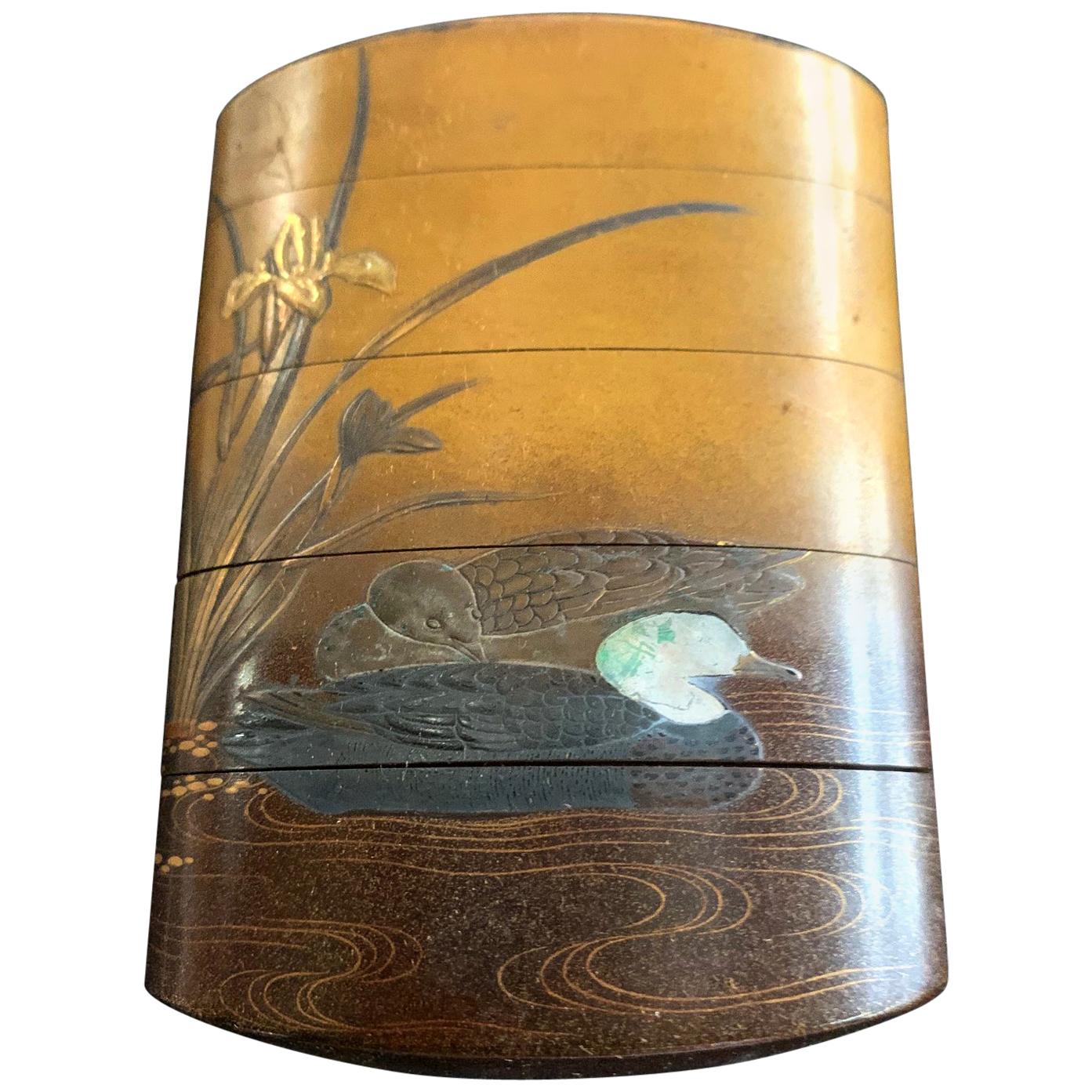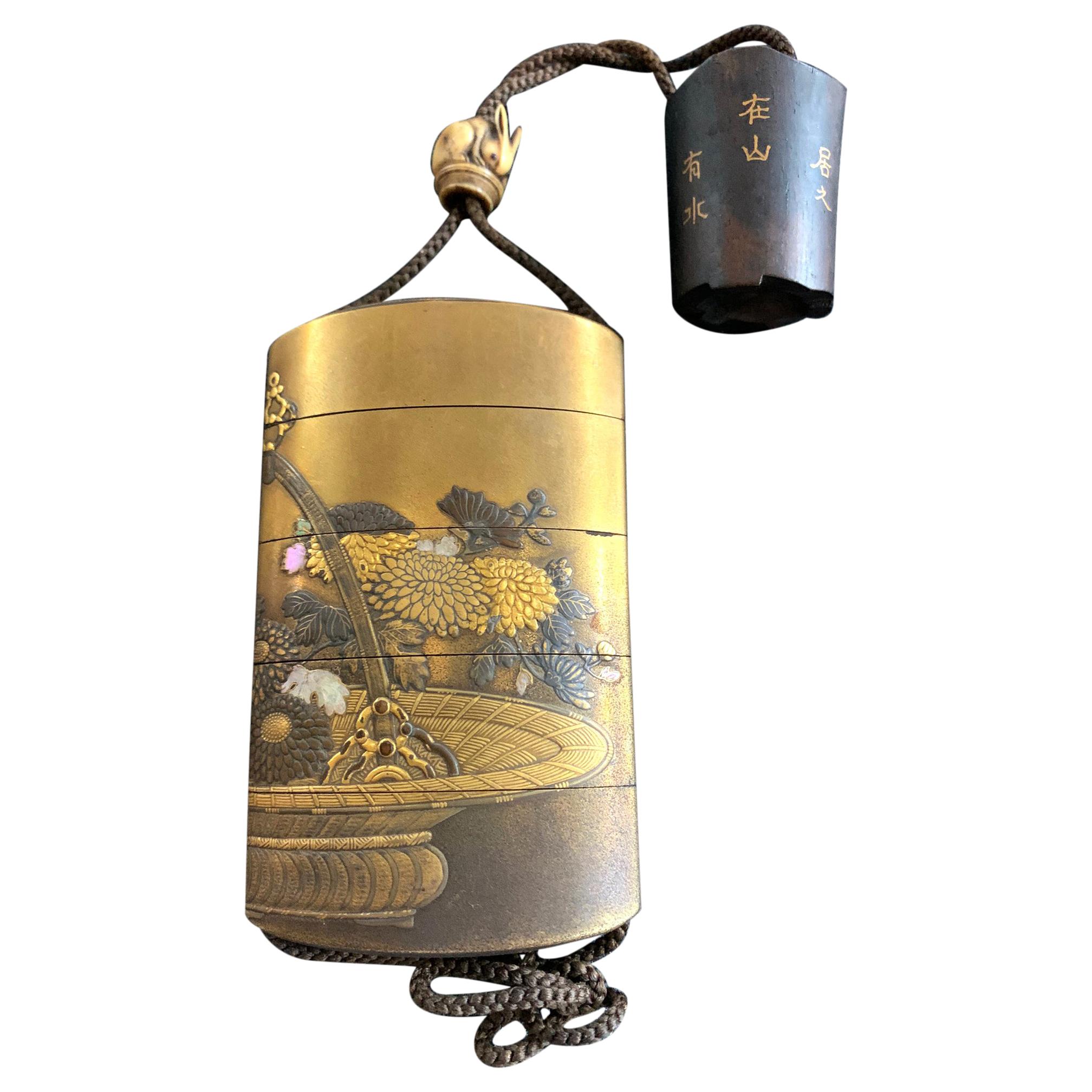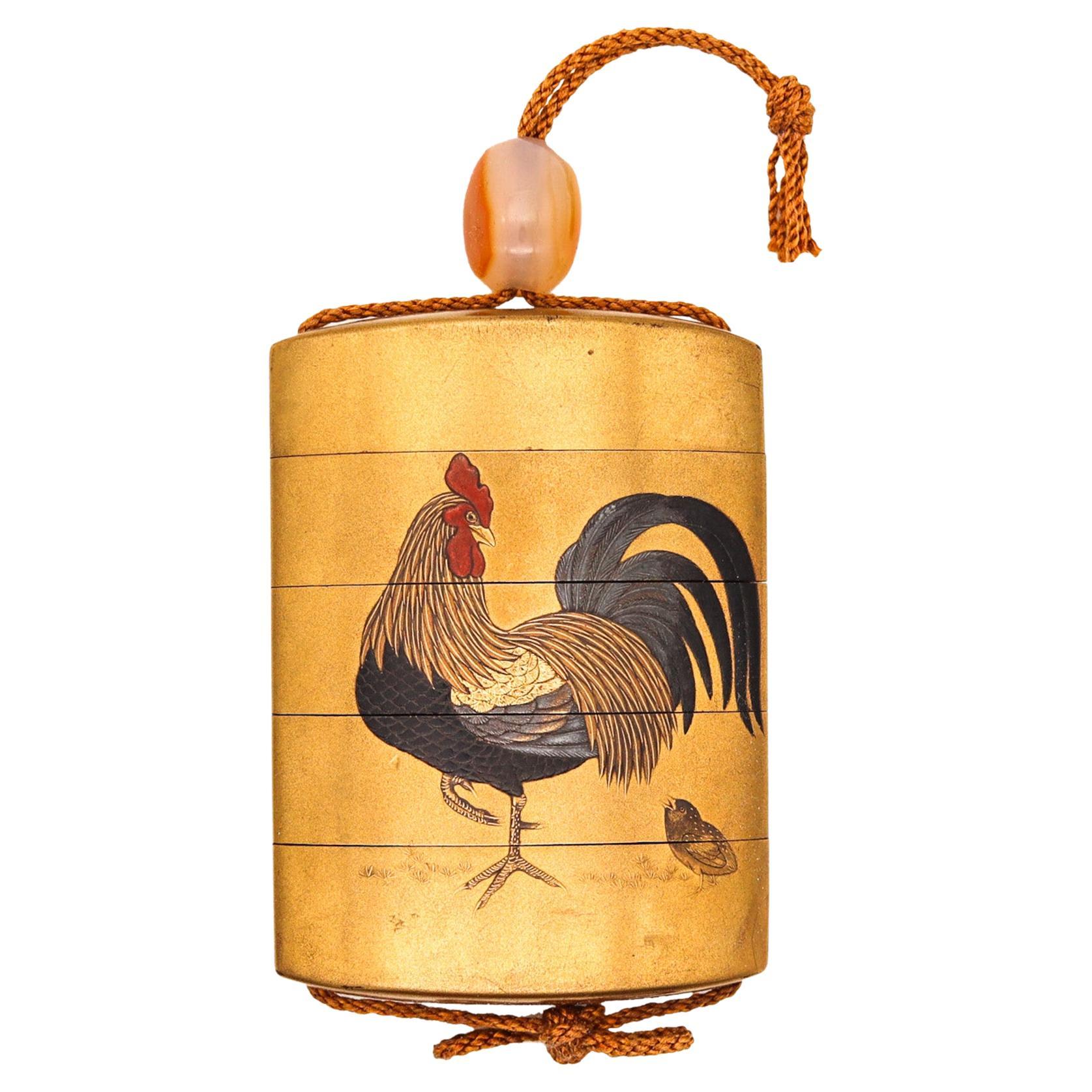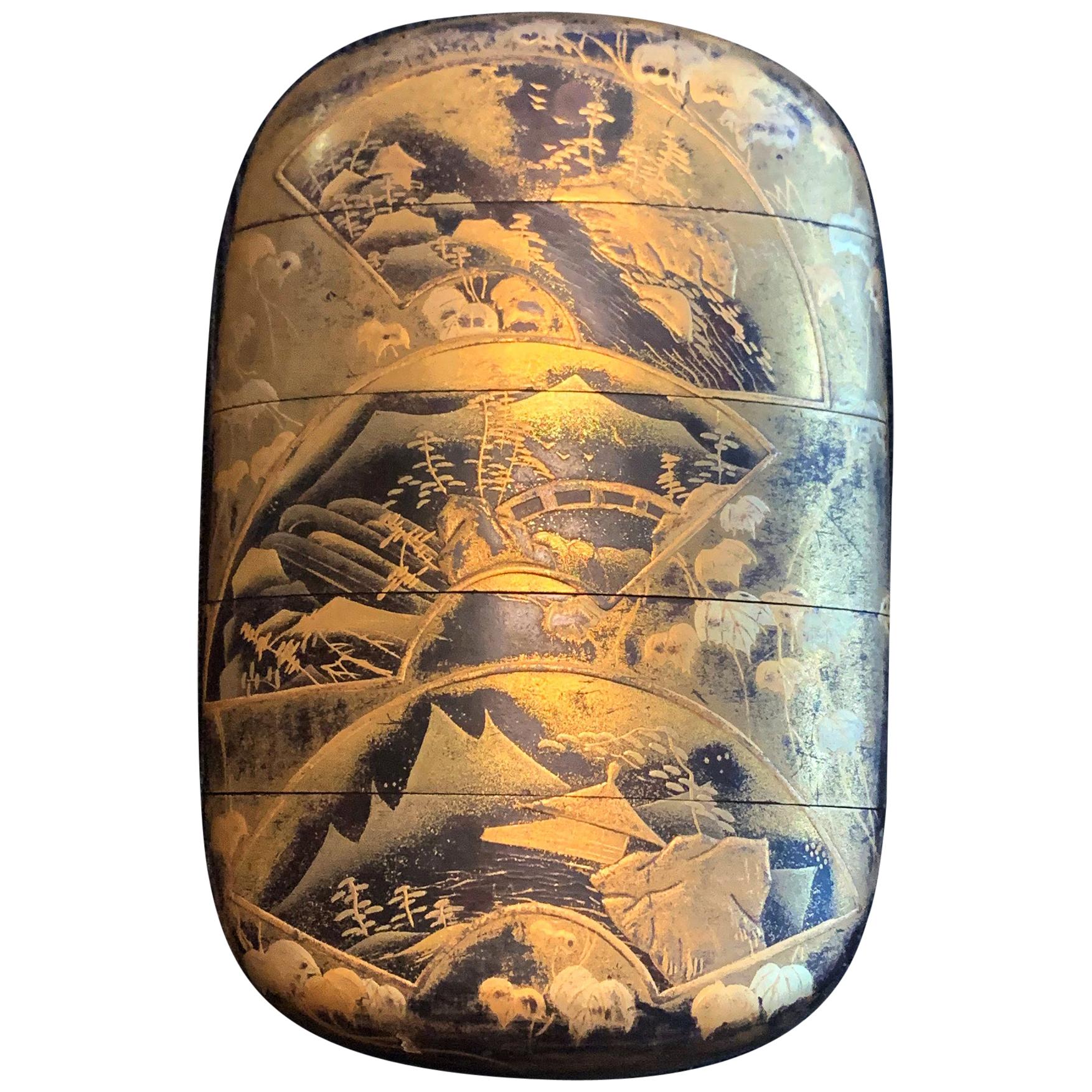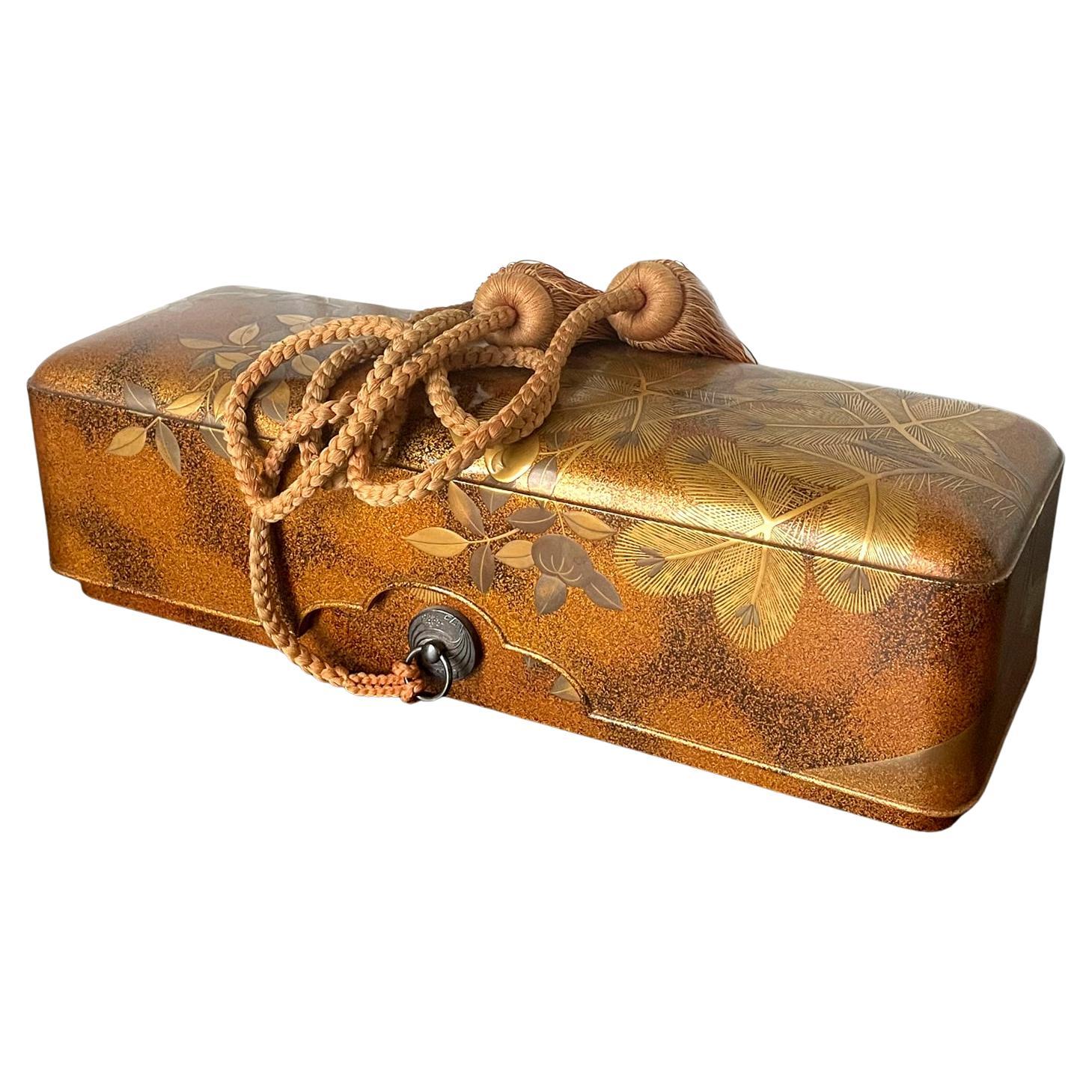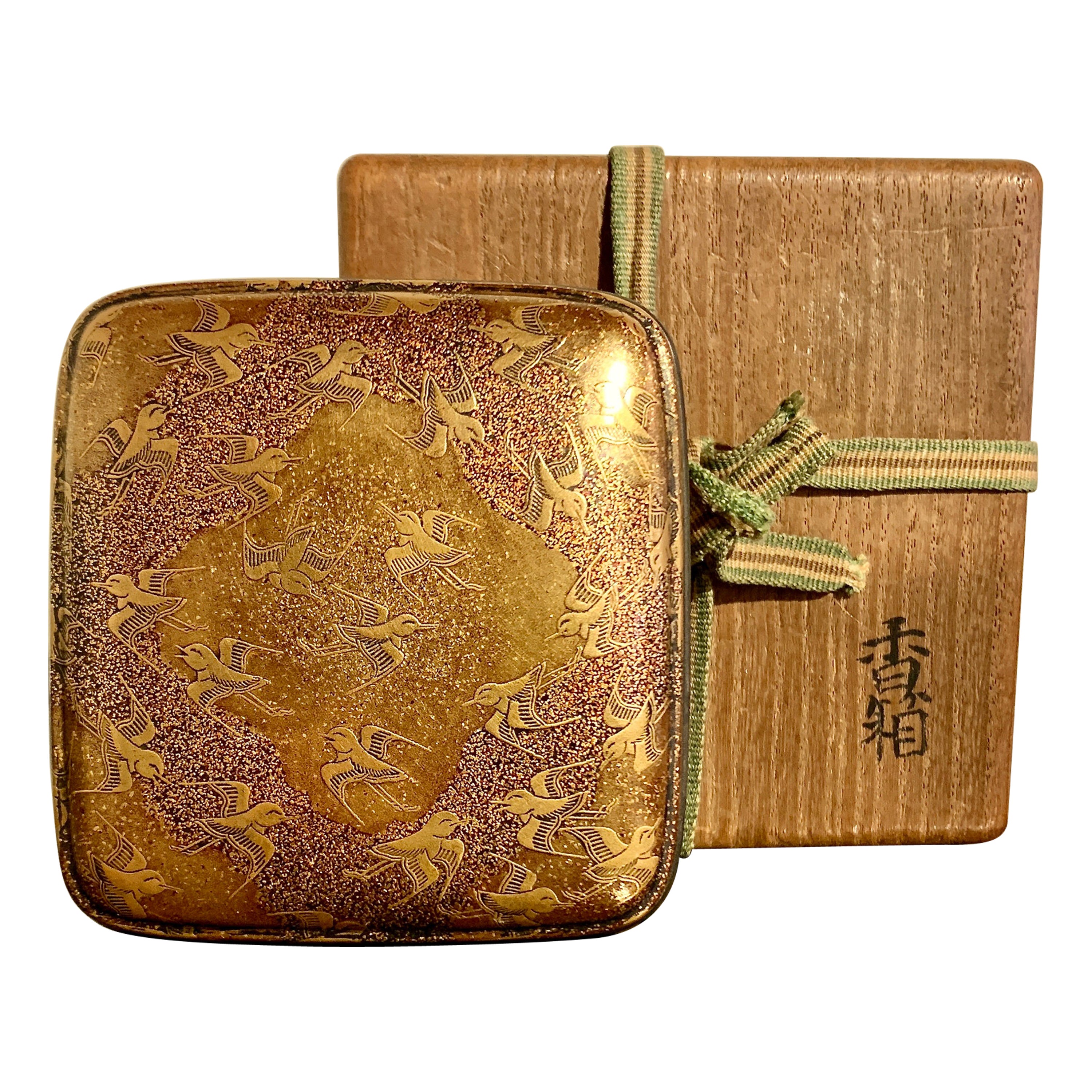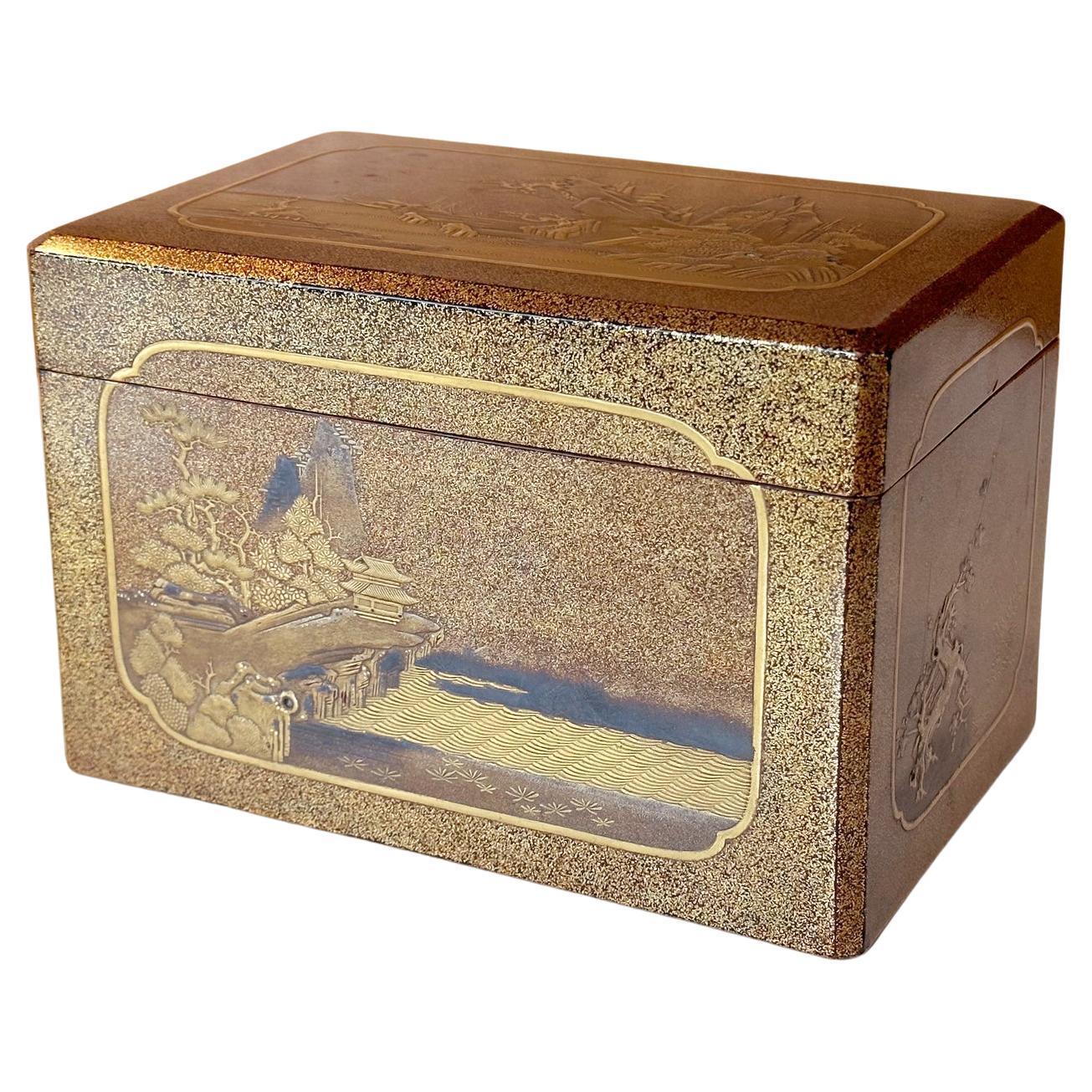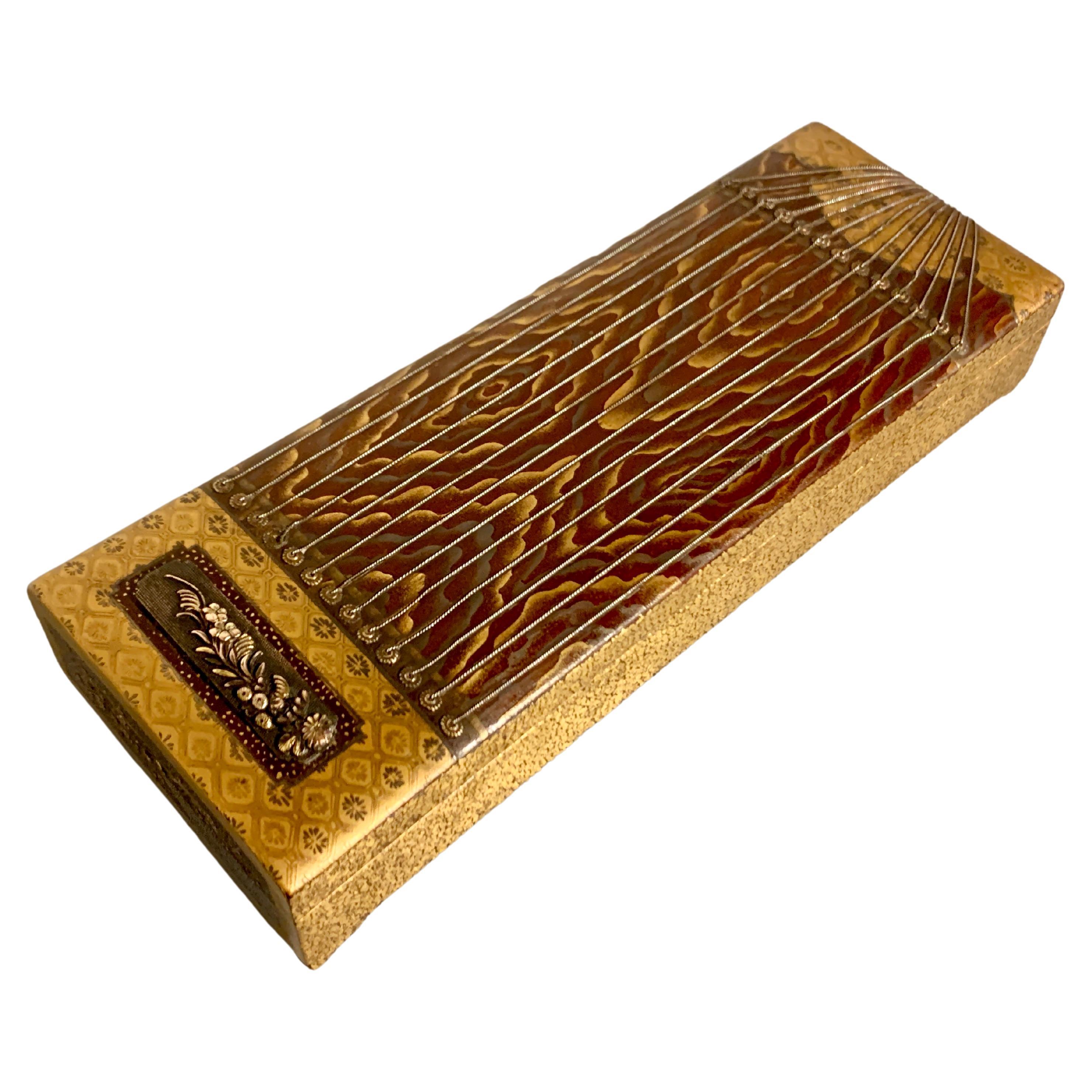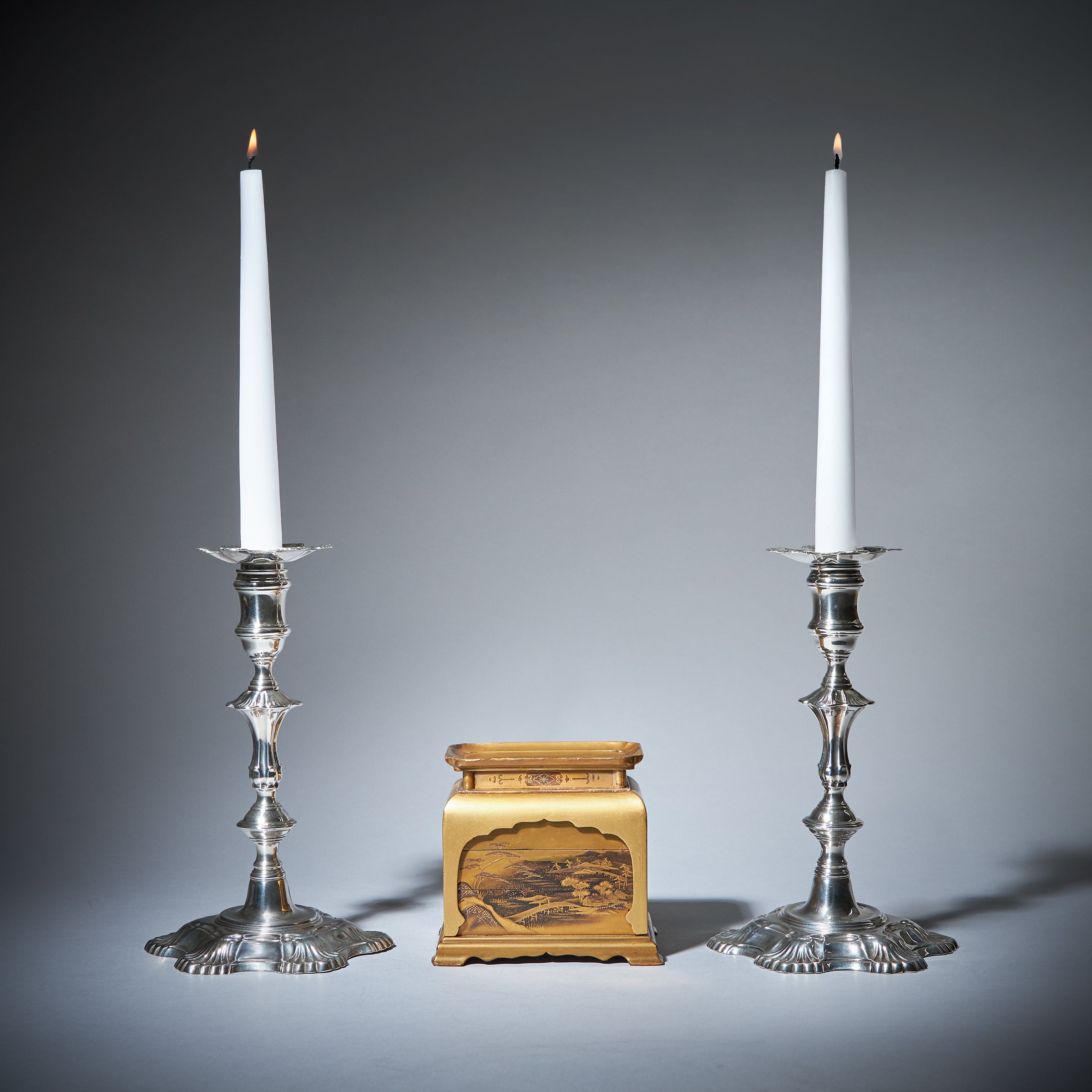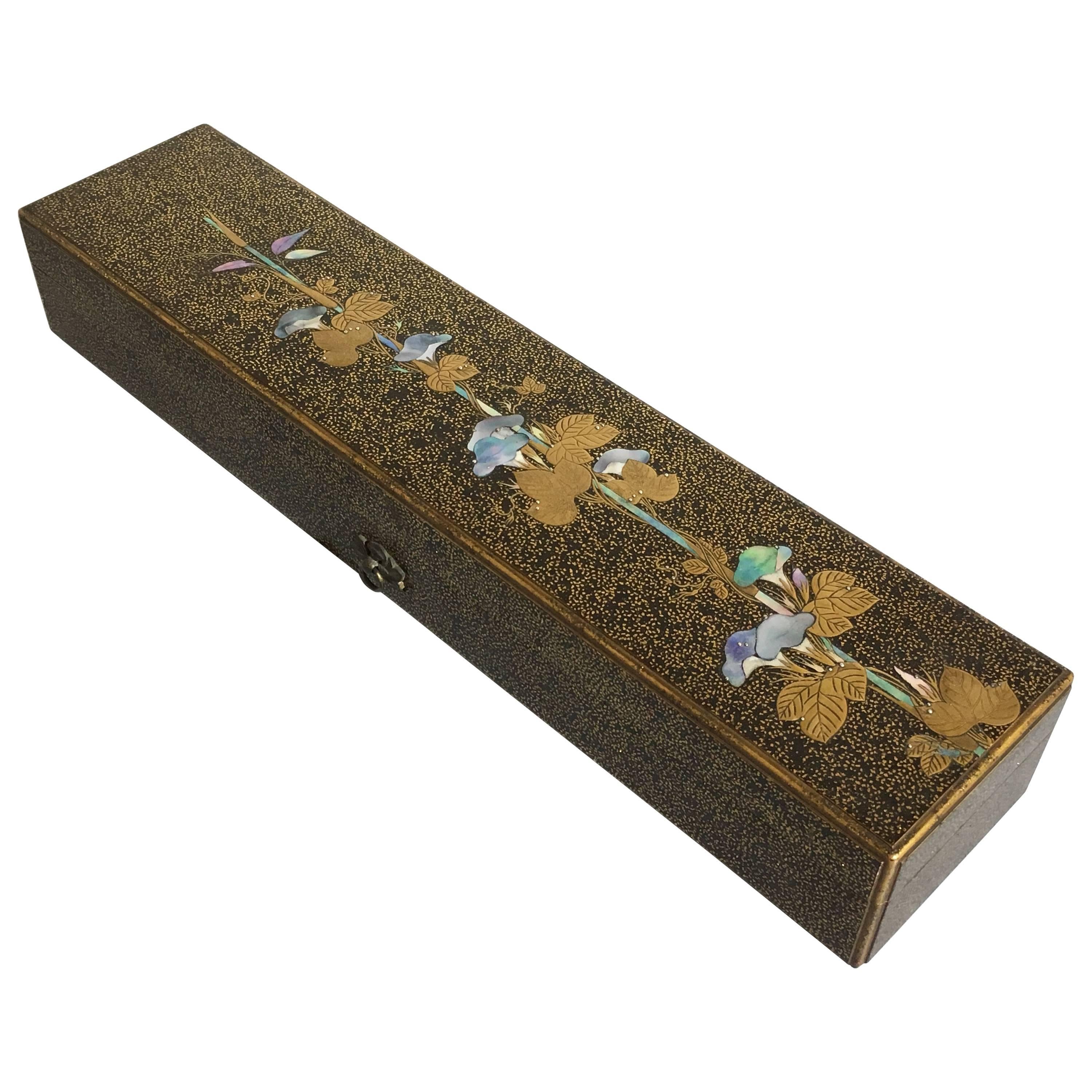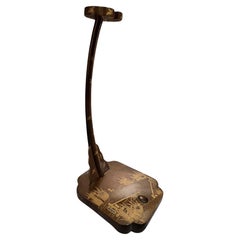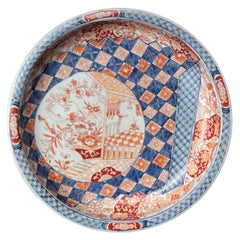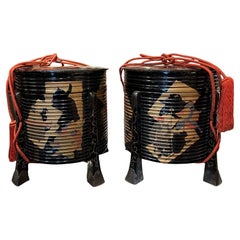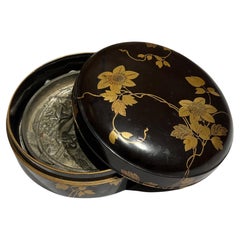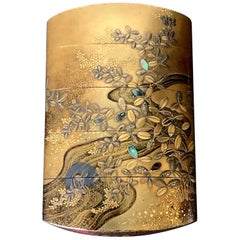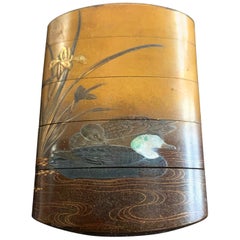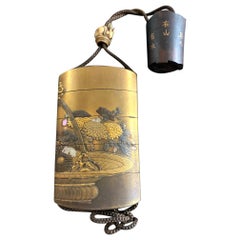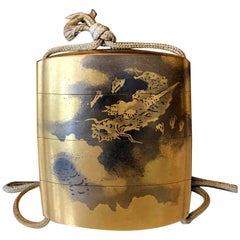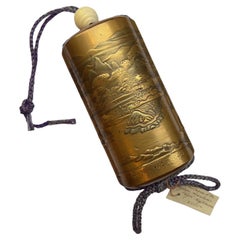
Japan, Late 18th Century Gold Lacquer Inro by Kajikawa, Edo Period
View Similar Items
Want more images or videos?
Request additional images or videos from the seller
1 of 6
Japan, Late 18th Century Gold Lacquer Inro by Kajikawa, Edo Period
About the Item
- Dimensions:Height: 3.86 in (9.8 cm)Width: 1.97 in (5 cm)Depth: 1.03 in (2.6 cm)
- Materials and Techniques:Lacquer,Lacquered
- Place of Origin:
- Period:
- Date of Manufacture:1790
- Condition:Wear consistent with age and use. Some wears on the lacquer as often but nothing important, all visible on pictures.
- Seller Location:PARIS, FR
- Reference Number:1stDibs: LU6491234048382
About the Seller
5.0
Recognized Seller
These prestigious sellers are industry leaders and represent the highest echelon for item quality and design.
Established in 1982
1stDibs seller since 2022
6 sales on 1stDibs
Authenticity Guarantee
In the unlikely event there’s an issue with an item’s authenticity, contact us within 1 year for a full refund. DetailsMoney-Back Guarantee
If your item is not as described, is damaged in transit, or does not arrive, contact us within 7 days for a full refund. Details24-Hour Cancellation
You have a 24-hour grace period in which to reconsider your purchase, with no questions asked.Vetted Professional Sellers
Our world-class sellers must adhere to strict standards for service and quality, maintaining the integrity of our listings.Price-Match Guarantee
If you find that a seller listed the same item for a lower price elsewhere, we’ll match it.Trusted Global Delivery
Our best-in-class carrier network provides specialized shipping options worldwide, including custom delivery.More From This Seller
View AllRare Japanese Lacquered Katana Stand – Tashi Kake, Meiji Period (19th Century)
Located in PARIS, FR
Japanese Lacquered Katana Stand – Tashi Kake, Meiji Period (19th Century)
Rare Tashi Kake from Japan, an elegant vertical stand for a katana, crafted in fully lacquered wood. This M...
Category
Antique Late 19th Century Japanese Lacquer
Materials
Lacquer
Japan, a Late 18th Century Imari Charger, Edo Period
Located in PARIS, FR
Nice hand painted Porcelain charger in the Imari palette using underglaze cobalt bleu and iron red.
Japan, Edo period, late 18th century.
Category
Antique Late 18th Century Japanese Ceramics
Materials
Porcelain
$1,487 Sale Price
20% Off
Japan, Pair of Hokai boxes in lacquered wood, Edo period, 1829
Located in PARIS, FR
Japan, Pair of Hokai boxes in lacquered wood, Edo period, 1829
Japan, Rare Pair of Hokai boxes in lacquered wood, Edo period, dated Bunsei 12, 1829.
Hokai boxes are traditionally use...
Category
Antique 19th Century Japanese Chinoiserie Decorative Boxes
Materials
Lacquer
Japanese Cast Bronze Mirror and lacqer box, Edo Period, 18th Century, Japan
Located in PARIS, FR
A heavy and finely cast Japanese bronze mirror decorated with pines , cranes wich are longevity symbols, The handle in the center is a a tutle which also symbolize longevity.
Edo Period, 18th century, Japan.
The small, round mirror with high walls has been intricately and exquisitely cast with symbols . The turtle has a domed shell pieced to allow a cord to be strung through for handling or hanging.
A five charactesr mark is cast on the border.
Mirror is 12 ,3 x 1,6 cm
Box is 14,2 x 5 cm
Surrounding the turtle and inscription is a densely cast landscape featuring pine trees with fantastic needles, two cranes with their 3 youngs, dense stalks of leafy bamboo. and a blooming prunus on the left side.
All are symbols of longevity. Bamboo also symbolizes resilience and prosperity. Bamboo asociated with prunus and pine are called the 3 frinds of winter.
The other side of the mirror is undecorated, and would originally have been highly polished, allowing the user to see their reflection in the polished surface.
The bronze with a wonderful, warm silver patina.
This mirror is presented in its original lacquer box , hand decorated in the Kodaiji style with gold lacquer flowers...
Category
Antique Late 18th Century Japanese Japonisme Metalwork
Materials
Bronze
Japanese porcelain blue and white Bowl, Japan , Arita Edo period, 18th Century
Located in PARIS, FR
This exquisite large Japanese porcelain bowl from Arita is in impeccable condition, boasting no signs of restoration. Its exterior showcases continuous karakusa scrolls inspired by t...
Category
Antique 18th Century Japanese Edo Decorative Bowls
Materials
Porcelain
$929 Sale Price
33% Off
Large Japanese Cloisonné Box and Cover, Japan, Meiji Period, 19th Century
Located in PARIS, FR
A rare Japanese bark tree large cloisonné box on metal from the Meiji period. Usually bark tree cloisonné was on porcelain (totai Shippo)
A very attracti...
Category
Antique Late 19th Century Japanese Metalwork
Materials
Metal
$2,439 Sale Price
25% Off
You May Also Like
Fine Japanese Lacquered Inro with Inlays by Kajikawa
Located in Atlanta, GA
A Japanese four-case lacquer inro by a member of Kajikawa family circa 19th century (late Edo to early Meiji period). It depicts a nocturnal scenery of a meandering stream surrounded by bush clovers, where a full moon is reflected on the water. It was masterfully decorated in gold and silver maki-e using a combination of techniques including takamakie, togidashi and kirigane as well as aogai (abalone shell) inlays. The stream was set between the slightly elevated banks, adding to this piece a already strong three-dimensional composition. The interior was decorated in gold nashiji. It was signed on the bottom "Kajikawa Zou" (made by Kajikawa and a pot seal centered with "Ei" in Kanji. In one of the compartment, there is a katakana mark, appears to be a name, possibly the owner.
Kajikawa clan was one of the most famous lacquer artisanal family established in the 17th century. Many well known members over the generations produced lacquer art in a wide range of formats, but two third were signed only with the family name such as this one. It is therefore not possible to pinpoint the exact author of this piece.
Provenance: This inro was purchased as lot 349 in Christie's New York sale Japanese...
Category
Antique 19th Century Japanese Japonisme Lacquer
Materials
Shell, Wood, Lacquer
Japanese Inro by Koma Koryu Edo Period
Located in Atlanta, GA
A four-case lacquered inro by Koma Koryu circa 19th century late Edo period. The inro features a pair of Chinese mandarin duck resting under a bundle of blooming irises on the pond. ...
Category
Antique 19th Century Japanese Japonisme Lacquer
Materials
Wood, Lacquer
Antique Japanese Inro by Shigehide Edo Period
Located in Atlanta, GA
This exquisite four-case lacquered inro was dated to the latter part of 18th century to early 19th century (Edo period) and made by Shigehide. The opposite sides of the inro together features a lavish flower arrangement in a bamboo basket (ikebana). The detailed craftmanship was a true pleasure to behold. Mostly Takamaki-e (high relief) were used to texturize the delicate petals of the chrysanthemums, on which different shades of gold were used to create contrast. Raden (mother of pearl) shells were also used to highlight some leaves, rendering the piece an interesting balance of color and material. The interior was completed in a mottled gold finish. It was signed Shigehide on the bottom with a Kao. There is a small carved rabbit ojime bead...
Category
Antique Late 18th Century Japanese Japonisme Lacquer
Materials
Wood, Lacquer
Rare Japanese Sumi-E Lacquer Inro Yamada Jokasai Edo Period
Located in Atlanta, GA
A three-case lacquered Inro by Yamada Family circa 18th-19th century Edo period. The inro with slight rounded form is of Kano style and vividly depicts a dragon slithering among the ink clouds on a gold background. Sumi-e togidashi (ink togidashi) technique, in combination with Hiramaki-e, were employed to create the dreamy ambience of this piece. The dragon has a painterly appearance inspired by Chinese ink painting that was often seen on the Japanese folding screens. The back of the Inro was sparsely decorated with the shifting patterns of the darkening clouds with an emphasis on the space intentionally left empty. Jokasai was signed to the base. On the front of the inro there is another miniature signature Hakugyoku Hogen, which is one of names used by Kano Michinobu (1730-1790). The dragon is evidently one of his designs (see reference below).
Established by a member of Yamada family in the 17th century, the clan was one of the most prominent lacquer artisanal family for the next 200 years until the end of Edo period in the 19th century. Most members signed their work simply with Jokasai making the identification of the individual artists somewhat impossible. The current Inro on offer, compared to many other pieces by Jokasai, has an uncommon Kano style done in Sumi-e togidashi.
Another unusual feature of this piece is that the interiors of the inro was decorated with an interesting gold mosaic inlays (kirigane) on a dark lacquer background, giving it a jewel like quality.
For another Inro by Jokasai of a similar style using Sumi-e togidashi but depicts a tiger, see Wrangham collection, no.353, which was offered for sale as lot 256 in Bonham's London Auction: The Edward Wrangham Collection of Japanese Art Part I. 9 Nov 2010.
For an ink scroll...
Category
Antique 18th Century Japanese Japonisme Lacquer
Materials
Wood, Lacquer
Japan 1810 Kajikawa Edo Period Five Drawer Inro Lacquered Gilt Wood With Rooster
Located in Miami, FL
Japanese Inro from the Edo period (1615-1868) created by Kajikawa.
Beautiful Inro, created in Japan by one of the Kajikawa family during the Edo period (1615-1868), circa 1810. Has been carefully crafted in carved precious wood with applications of gilding maki-e and decorated with Japonism patterns. All dan trays are attached together with a himo cord. The detailed craftsmanship was a true pleasure to behold.
Period: Edo period (1615-1868). Shogunate.
Approximate Date: 1790-1810
Motif: A family of birds consisting of a cockerel, the hen and three chicks.
Drawers: Five.
Shape: Rectangular navette.
Technique: Carved wood, lacquer and decorated in iroe-hiramaki-e on a gold ground.
Ojime: 15mm 20mm, oval carved from natural translucent agate.
Netsuke: None
Weight: 47.70 Grams.
Measurements: Inro is 78 mm by 55 mm by 18 mm (3.07 x 2.17 x 0.71 Inches).
Signatures: Kajikawa Saku, in the underside with the signature KAJIKAWA. By a member of the Kajikawa family, signed Kajikawa 梶川 Japan, late 18th century to early 19th century, Edo period (1615-1868).
The Kajikawa family
Kajikawa family, flourished in the 19th century, they was Japanese lacquerware artists whose school in Edo (now Tokyo) flourished for more than 200 years. This family is perhaps the most famous of all the dynasties of Japanese lacquer artists, and certainly the name most often found on inro. The family is said to have been founded by Hikobei at Edo in the early 17th century, although some claim that the family’s great reputation really stemmed from his son and pupil Kyujiro. In any event, Hikobei worked for the shogunate, as did his successors until well into the 19th century. Kijirō excelled in designing particularly delicate lacquer inrō, portable medicine cases...
Category
Antique 1810s Japanese Edo Lacquer
Materials
Agate, Gold
Fine Japanese Lacquered Inro by Yutokusai
Located in Atlanta, GA
A four-case lacquered Japanese inro by Yutokusai (Gyokkei), a lacquer artist active from 1845-1900 (end of Edo to Meiji period). The slightly round inro features a very intricate design with three unfolded fans on the front and two on the back: each reveals a vignette landscape scenery, likely real places in Japan. Using a combination of hiramaki-e and slight takamaki-e, the artist deftly created the pictures with fine details, rendering the inro as a miniature artwork...
Category
Antique 19th Century Japanese Japonisme Lacquer
Materials
Wood, Lacquer
Recently Viewed
View AllMore Ways To Browse
Japanese Inro
Chinese Lacquer Fan
Japanese Ink Stone
Japanese Lacquer Plaque
Japanese Lacquered Miniature
Japan Ivory Lacquer
Japanese Comb
Japanese Lacquer Ware
Korean Mother Of Pearl Furniture
Korean Mother Of Pearl
Large Cinnabar
Japanese Red Lacquer Tray
Antique Chinese Cinnabar Lacquer
Chinese Red Lacquer Tray
Nagasaki Lacquer
Red Lacquer Ware
Burmese Lacquer Trays
Japanese Lacquered Trunk

